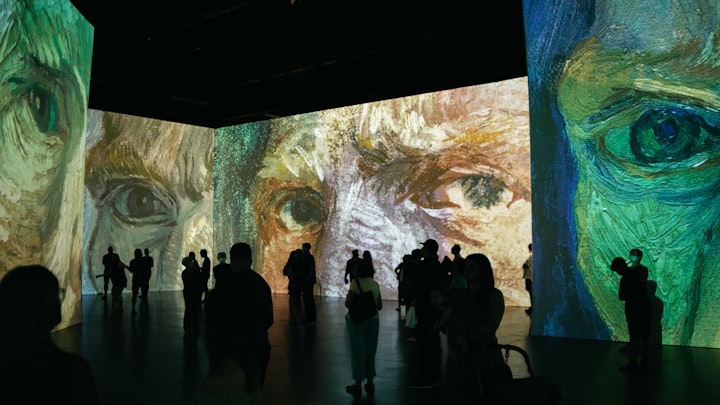The Death Of Vincent Van Gogh
The Death Of Vincent Van Gogh
On July 27, 1890, intellectuals and art lovers speculated for a long time in the sequence of events that day, which resulted in gunshot wounds to the abdomen. After a pioneer study of Pulitzer Prize-winner Steven Naifeh and Gregory White Smith, who first published his study of Van Gogh in 1890, the singer was shot by a man named Rene Secretan who presented his whole life (see Vicente Minnelli's Van Gogh film Lust for Life) (1956) the artist is shown in the forest around the French city of Auvers-Sur-Oise near Paris). Little is known about how he received the gunshot wound to his stomach in the 30 hours leading up to July 27. Some art historians believe that his death was the result of suicide, but there is no universal truth in this view.
When his father asked if Van Gogh was ill, he showed him the wound in his heart and explained that the night before, he had admitted to going to the wheat fields where he had drawn himself and shot himself with intent to kill himself. Two American writers, Steven Naifeh and Gregory White Smith wrote that he was shot in the abdomen by 16-year-old Rene Secretan on July 27, 1890, who was a mocking summer attorney in Auvers-Sur-Oise. He was able to return to his bar but died two days later.
A few hours after the shooting, Vincent's doctor Paul Gachet wrote to the artist's brother Theo van Gogh announcing that the singer had also injured himself. No one admitted finding the missing bullets in the incident because doctors were unable to trace the artist's wounds. Another inscription found on Van Gogh's clothes after his death was the first copy of his last letter to his brother published on July 27, 1890, on the day of the shooting.
His brother Theo was so upset that he offered Paul Gauguin money to watch Vincent in Arle. The witness has spent most of his life including himself and Paul Gachet, a homeopathic doctor who represented Van Gogh's famous portrait, his unpopular value, and portraits of a father and son removed from Vincent's studio the day before his death. After spending a year at the center, Van Gogh had painted many of his most famous paintings including Starry Night in July 1890, but he suffered from constant moods.
Those close to him, especially his brother Theo, saw the seriousness of his mental instability and urged him to be admitted to a psychiatric hospital near Arles, where he lived and painted with Paul Gauguin. According to a letter from Dr. Gachet to his brother Theo and his friend Emile Bernard, Vincent shot himself. If Vincent van Gogh had not shot himself in the stomach, the red flag itself, but then on July 27 he was injured in the abdomen 30 hours earlier, it would have been the murder of the artist.
On July 27th, 1890, Vincent van Gogh has shot in the abdomen 130 years ago. His death occurred in his room at Auberge Ravoux in the town of Auver-Sur-Oise in northern France on 29 July 1890 early in his room in Auberge Ravoux. The gun that will be put up for auction next week in Paris is similar to the description of a 7mm bullet Van Gogh took from his body by his doctor, and it is suspected that the bullet was so weak that he did not die as he left the hotel but his chest.
Vincent van Gogh (1853-1890) died early July 29, 1890, in his room at Auberge Ravoux in Auvers-Sur-Oise. Adeline Ravoux explained that the two were watching Van Gogh fall unconscious and die at one o'clock in the morning [26], while his brother. Theo arrived in the afternoon by train; the date of death was stated on the death certificate at 1.30 am. Theo died six months later in his Dutch shelter.
Two weeks before Vincent's death, he wrote to Theo using the word "suicide". Louis van Tilborgh and Teio Meendendorp point out that the nature of the gunshot wounds and the relationship with his brother Theo in a book in his bag, not to mention biography, could help to prove suicide. Authors Steven Naifeh and Gregory White Smith wonder if Van Gogh took a two-mile trip to the Inn with a wheat field, with a fatal wound on his stomach, whether he had bought a gun because of his mental health problems, and that the drawing equipment had never been found by police.
Vincent van Gogh's suicide seems to be widely accepted at the Van Gogh Museum, at least according to its website, although there are signs of terrible darkness in the letters he wrote to his brother. Theories that his death was a murder or manslaughter emerged in 2011 with a complete biography of two American writers, Steven Naifeh and Gregory White Smith. The concept of murder and murder has been killed in two famous films, Painted with Animation: The Loving Vincent (2017) by artist Julian Schnabel and Eternity's Gate (2018).
Vincent van Gogh, replaced by Vincent Willem van Gogh (born March 30, 1853, in Zundert, Netherlands - died July 29, 1890, in Auver-Sur-Oise, Paris, France), a Dutch artist considered to be the greatest since Rembrandt van Rijn and others good post-impressionists. Theo felt he had no objection to Dr. Gachet because he was a dedicated painter and had many artists he respected.






Comments
There are no comments for this story
Be the first to respond and start the conversation.